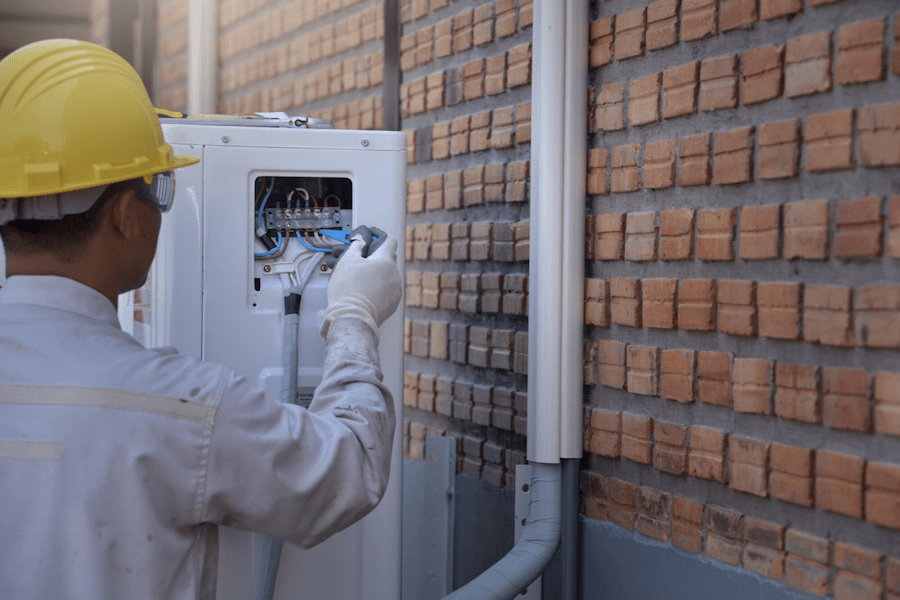Are you considering installing a new air conditioner (AC) and unsure what to do? Do you want to ensure you do the installation correctly the first time?
If so, then you need to make sure you have a good understanding of the process before you start installing the AC unit, as well as what you should avoid. If you don’t, you could have a big problem that costs you money and time.
Fortunately, this guide will help. Continue reading to learn what to do and what not to do when installing an AC unit.
The Do’s
When installing an AC unit, there are several important do’s that you need to keep in mind. These things you should remember to do are written down below:
Research Different AC Options
Researching different types of air conditioners before buying is essential in getting the best deal for your money. Knowing each model’s size, style, and energy-efficiency level will help you compare and choose the best unit for your needs.
You must also know the features and maintenance needed for the air conditioner options. It is so that you can choose the correct one for your home and your budget.
Consult With a Qualified and Certified Professional
Certified and qualified professionals are essential to ensure that the installation is correct. With the help of these professionals, the cost and time spent replacing the faulty AC unit can be affordable and convenient.
Furthermore, an incorrect installation can cause safety concerns and excessive energy consumption. Professionals will be able to provide guidance and expertise. It can save time and money and potentially reduce headaches associated with some installations.
In the end, they are essential for a successful AC installation. So check out AC installation services here and start talking with professionals for a better experience.
Follow All Instructions and Safety Guidelines
When installing an AC unit, following all instructions and safety guidelines is essential. Not doing so could cause severe injury or even death and potentially damage the unit or other things connected to it.
Furthermore, it could invalidate an AC’s warranty, leaving you liable for paying for any repairs and replacements. The AC unit may also not work efficiently and will likely suffer from malfunctions. You may even need to replace it sooner than expected.
Use Proper Tools, Materials, and Equipment
Improper installation can lead to poor airflow, insulation, and temperature control. Using the wrong tools, materials, and equipment will lead to frequent repairs and replacements. And ultimately, it can result in a costly and time-consuming installation.
When you use the correct tools, materials, and equipment, it can increase the longevity and efficiency of the unit. It will lead to significant money and time savings in the long run. And it can also significantly reduce the risk of hazards caused by electrocution and other related dangers.
The Don’t
If there are do’s, there are also don’t’s when installing an AC unit. So take the time to read them below:
Compromise Quality
Uncompromising quality is necessary for AC units to ensure efficiency and long-term savings. Quality components and installation should be at the top of the priority list when investing in an AC unit.
It might be more costly upfront but will pay off in the long run. You will experience a more comfortable living or work environment, lower energy bills, and fewer trips to the repair shop.
Buy the Wrong Unit Size
Installing an air conditioner in your home can be daunting, but selecting the wrong unit size can make matters even more difficult. An AC unit that is too small will use much more energy to keep your home comfortable, driving up your energy costs in the long run. An oversized unit will cycle on and off frequently, leading to potential lasting damage to the compressor and fan motor.
An AC unit can also be tricky to install. So a wrong unit size could make the installation process even more labor-intensive. For these reasons, it is essential to make sure that you are purchasing the right AC unit size when installing it.
Install the Unit Close to Furniture or Curtains
Installing an AC unit close to furniture or curtains can be dangerous and damaging. Air conditioning units release a great deal of cold air, which can cause objects close to the team to become brittle and breakable. Long periods with cold air blowing can also cause fabrics to shrink, become misshapen, or puncture easily.
Set Up the Unit on an Unstable Surface
An unstable surface can cause the air conditioner to vibrate and move, damaging the internal components. It can stop the unit from cooling correctly and even cause the team to malfunction, leading to costly repairs and replacements.
The vibrations can cause the surrounding walls and walls to shake, increasing the chance of them cracking. It can even cause the air conditioner’s fan blades to rub against the housing, which can cause damage and injury.
Installing the unit on an unstable surface can cause condensation and water leakage. It will lead to water damage to the surrounding walls, floor, and ceiling.
Follow Our Guide When You Are Installing an AC Unit
Installing an AC unit is a great way to ensure your home is comfortable and efficient during summer. But this requires careful planning and consideration. So you need to follow the dos and don’ts above to ensure proper installation, helping to save time and money on expensive repairs.
For more expert advice and assistance, contact a local certified HVAC technician. Have an AC unit installed in your home and reap the benefits today.
Did you find this article helpful? If so, check out the rest of our site for more posts like this now.

